My never-ending quest to photograph wildlife has taken me to some incredible locations: the majestic plains of the Masai Mara in Kenya, the dramatic cliffs of North East England and Scotland, a car park in Bellshill near Motherwell … hang on, what was that last one? A car park? Well, as it turns out, not every exotic species is found in a picturesque location. One bird, in particular, is an urban wildlife photographer’s dream – the bohemian waxwing.
Bohemian rhapsodies and charming princes
As people in homes up and down the country begin to think about decorating trees for the festive season, the waxwings are well ahead of the humans. As the daylight hours shrink and the air turns crisp, these avian adventurers make the arduous journey to our shores and provide a flash of vibrant colour amidst the bare branches of our winter landscape.
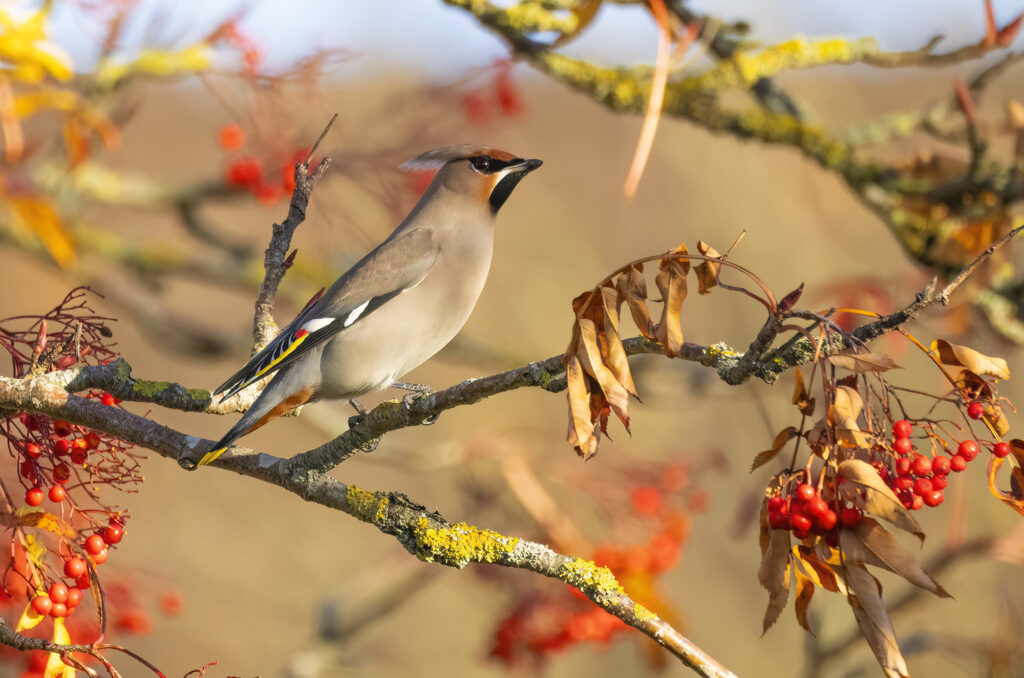
I defy anyone not to be completely charmed by these birds. Their plumage is a dazzling blend of buff, dusky pink and grey, with flashes of lemon yellow and crimson red on their wings. Waxwings get their name from the long, glossy red tips to the feather shafts in the middle of their wings. They also have a new romantic-style quiff in the form of a crest and a black bandit mask that Adam Ant would be proud of.
Irruption irregularity
Waxwings may be easy to identify, but clapping eyes on them can be a trickier affair – it all depends on what is happening north of the UK.
They are native to the boreal forests of Scandinavia, Russia, and parts of North America. These regions provide an ample supply of their beloved rowanberries. However, if these berries become scarce in their homelands during winter, they must travel to find the sustenance they seek. The UK, with its abundance of hedgerows and berry trees, then becomes a winter destination for these enchanting visitors.
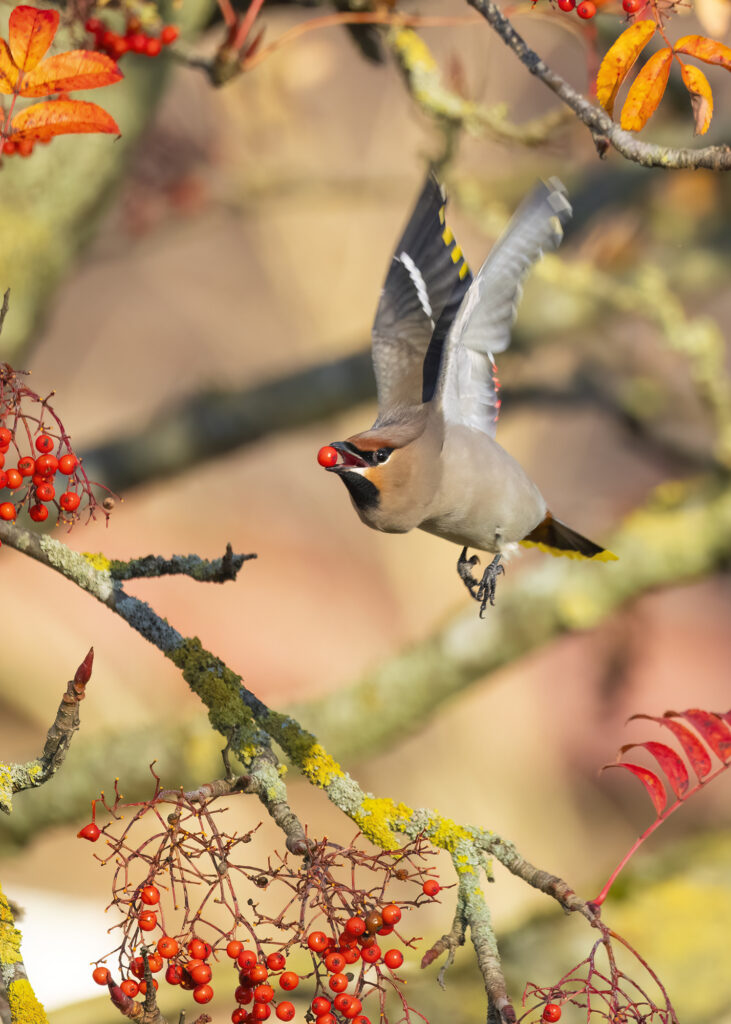
Usually arriving from October onwards, we tend to get the first waxwing sightings in the north and east of Britain. This makes sense, as their breeding grounds are to the east and north of us. Why go further than you need to for your berry dinner? In some winters, we only receive a handful of these birds, with sporadic sightings. While in other years, vast flocks can descend – with as many as 12,000 individuals recorded. When these large numbers arrive, they will often move further west and south across the country, leaving bare berry trees and overexcited birders in their wake. A season of plentiful sightings is known as an irruption or waxwing winter.
As the weather warms, waxwings start to feed on mosquitoes and midges and will return to their homelands, but it is not unusual to see some birds remaining here into spring – feeding on insects, flowers and tree buds.
A feast for the eyes
Like many tourists, waxwings are keen to sample the local delicacies and head straight for the best spots. In this case, these include retail parks, supermarket car parks, small urban parks and gardens, children’s play areas, and roadsides – basically, anywhere that has trees covered in berries. Luckily for the urban birder and wildlife photographer, this means that these birds are most likely to visit our territories.
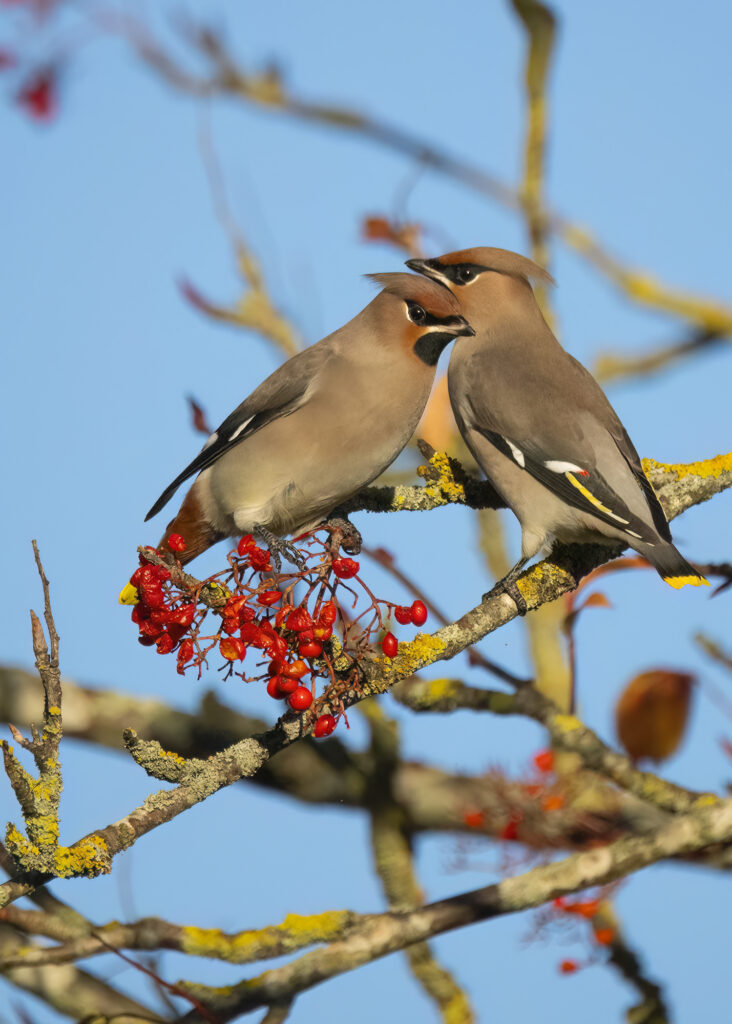
So, why not holiday somewhere quieter, a bit more off the beaten track? The answer is simple – waxwings need to scoff twice their body weight in berries (around 800 to 1,000) every day, so they are happy to go wherever their stomachs take them. Our native rowan is their berry of choice but they will also eat other native and non-native sorbus berries – including hawthorn, cotoneaster and rosehips – so the urban and suburban spots with plenty of ornamental shrubs get the most hungry visitors. If you want to attract waxwings to your garden but lack the berries, you can try hanging apples cut in half from any trees. You may get lucky, although you won’t be able to do your shopping, which is the advantage of simply heading to your nearest supermarket car park to see them.
Photographing hungry pilgrims
Hanging around (often literally upside down) in spots where humans come and go means that waxwings tend to tolerate people standing around gawping at them while they feed. I also like to think they know exactly how beautiful they are and quite like us staring at them.
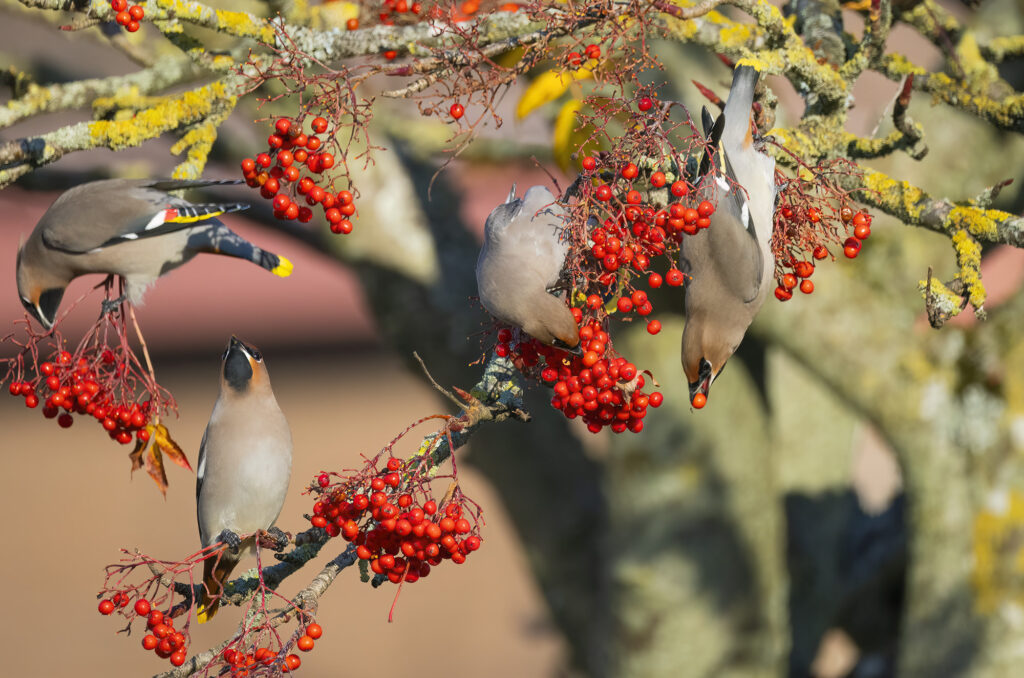
They also don’t seem particularly bothered by loud noises – as the video below shows. I captured this footage, and the images, standing in a play park car park where the rowan trees were also next to a busy road with a loudly beeping pedestrian crossing. The waxwings were unfazed. Occasionally, some would fly off into the tops of the tall trees beyond the road but would return a few minutes later. Watching them closely, it looked like this had more to do with needing a few moments to digest (something I am sure we can all relate to) rather than being flushed by any human activity. That said, it remains important to keep a respectable distance, and the quieter you are, the more the natural behaviour of these birds will shine. They drew quite a crowd while we watched them – including a man who bothered to drive into the car park to ask what we were looking at.
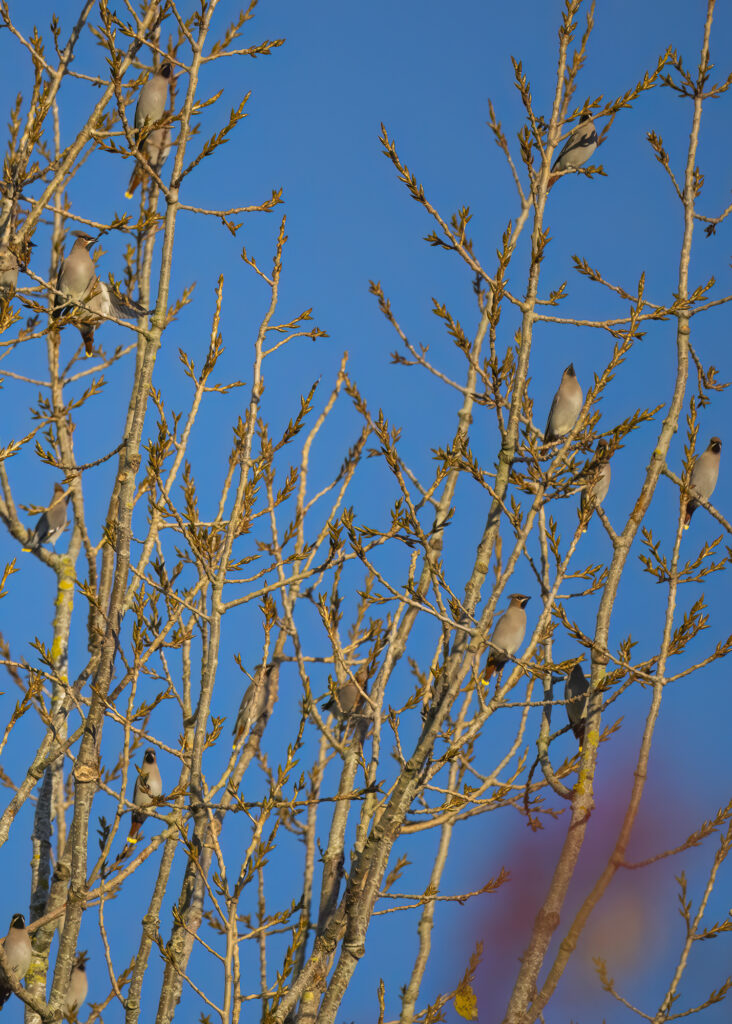
Photographing waxwings, once you have managed to find them, isn’t particularly tricky. Depending on the location, the trees they feed in will often be small, so you’re not constantly having to shoot up into the light. They will be preoccupied with feeding, so there is plenty of scope for photographing action shots as well as portraits. However, it is worth remembering that they are fast-moving, and if you want to capture the moments where they are throwing berries into their open beaks, you will need a fast shutter speed. This is particularly true if it is an overcast day, or the birds are feeding in shady spots. Also, if you’re as lucky as I was, you will have plenty of time to think about the images you want to capture and change the angle you’re shooting from, as the waxwings are unlikely to go anywhere while there are still berries to guzzle.
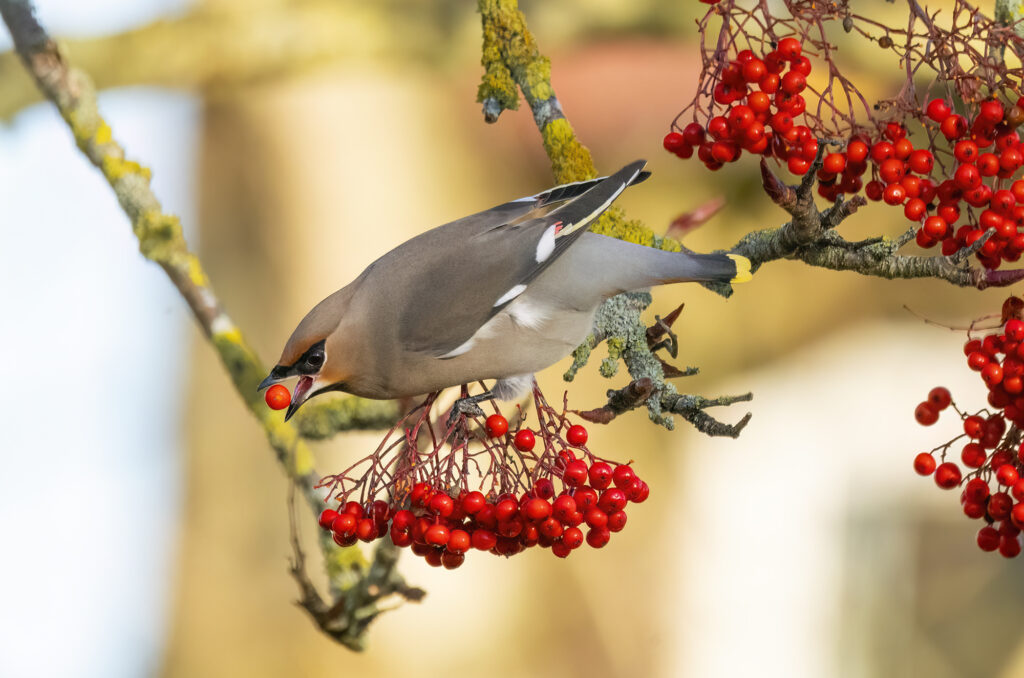
The key to all of this, of course, is finding the birds in the first place, and that is where social media can help. The X (formerly Twitter) account @WaxwingsUK tracks and shares waxwing sightings, although it can struggle to keep up during a waxwing winter and will often only share sightings of large numbers. I recommend finding local birding social media accounts and following or joining them. I owe all my images and footage to the wonderful @Clydebirding account, who posted the exact location of this flock of around 100 birds.
If you can be in the right place at the right time, you will reap the rewards. The wonder of a waxwing winter is worth the wait.

